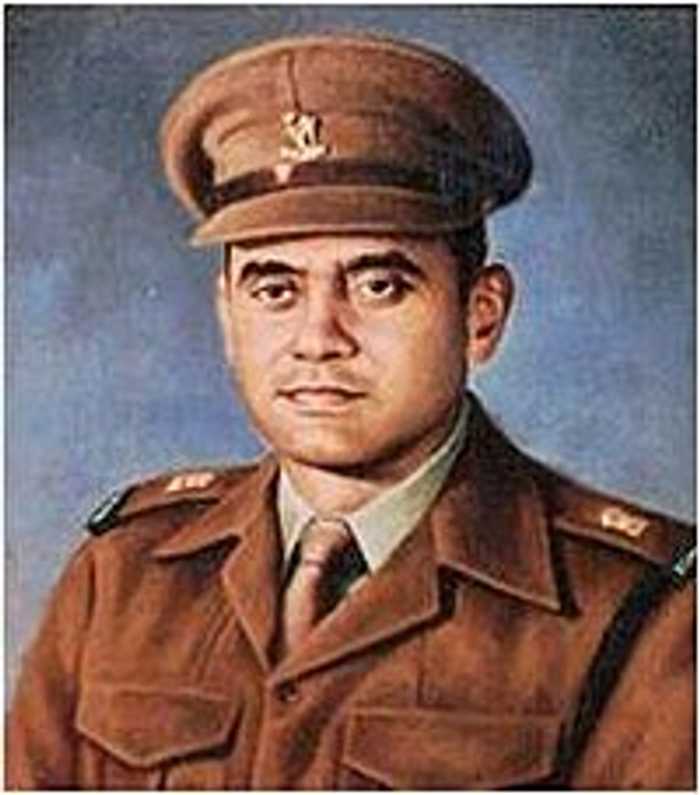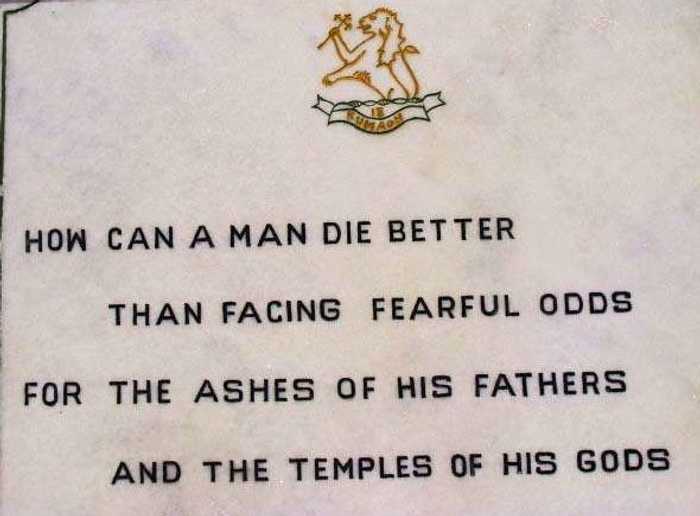Published 15:49 IST, August 14th 2024
'Last Man, Last Bullet' The Heroic Tale of 1962 Indo- China War at Rezang La
All the soldiers, except for their Rajput commander Major Shaitan Singh, were Ahirs from the Gurgaon and Mewat regions of Haryana.
- Defence
- 8 min read
Sixty-two years ago, India witnessed the true epitome of strength and valour during the Sino-Indian War of 1962. The tale of Rezang La begins on a frigid November night when a small band of Indian soldiers braced themselves to defend their position on the freezing mountains of the Chushul Valley's southeastern ridge against a much larger Chinese army.
In Neville Maxwell's book India’s China War, Chushul is described as a crucial strategic point for the defence of Leh. He added that the Spangur Gap, where Chushul is located, was expected to be the route the Chinese would take if they intended to advance further into Indian territory.
Rezang La, located at an altitude of 16,000 feet, experiences temperatures that can drop to minus 30 degrees Celsius. The soldiers of Charlie Company ('C' Company) from the 13th Battalion of the Kumaon Regiment displayed remarkable bravery, representing their motto of 'Last man, last round.' Their heroism continues to inspire many to this day.
Despite being underprepared for war, outnumbered by Chinese troops, and armed with outdated weapons, the soldiers faced additional challenges as the height of the mountains interfered with their artillery. Out of 120 soldiers and officers, 114 from the company laid down their lives, yet they managed to cause over 1,000 fatalities on the Chinese side.
Heroism That Has No Parallel
The Indian Army has faced many challenges in the past, but none like this one.
This achievement is even more commendable considering that all the soldiers, except for their Rajput commander Major Shaitan Singh, were Ahirs from the Gurgaon and Mewat regions of Haryana. These men, hailing from communities of cattlemen and farmers, had never experienced temperatures as low as minus 30 degrees, and most had only served in Jammu and Kashmir before this battle. This might be the reason Charlie Company of the 13 Kumaon Battalion is one of the most decorated units in Indian Army history, as written by Kulpreet Yadav, the author of the book ‘The Battle of Rezang La’.
The Chinese army was better prepared to bear the harsh weather and extreme cold of - 24 degrees Celsius. Out of the 120 Indian soldiers, 114 made the supreme sacrifice, five were captured as prisoners of war but eventually managed to escape, while one soldier was released by the Chinese to recount the events of the battle.
From China’s side, the exact number of casualties remains a topic of debate. Their official records claim 500 losses, but Kuldeep Yadav, in his book asserts that more than 1,000 Chinese soldiers were killed. Yadav also mentions that the frozen bodies of the Indian soldiers were discovered after months of search operations.
On February 10, 1963, the search team found the soldiers' bodies, with bullet wounds to their chests—proof of their bravery, strength, and valor.
In his book, Lest We Forget, Retired Captain Amarinder Singh recounts a rare tribute from the Chinese, who covered the bodies of the fallen Indian soldiers with blankets, securing them with bayonets.
Obstacles Encountered by Indian Troops
Not only were they outnumbered, but Indian troops faced numerous daunting challenges. The battle occurred at an average altitude of 16,000 feet, with the pass soaring higher at 16,420 feet. Soldiers faced a difficult time digging defensive positions in the frozen ground.
Colonel N. N. Bhatia (Retd.) recalled that the Indian troops faced significant challenges due to the high mountain crests, which made it impossible to use artillery effectively. They also lacked anti-personnel mines to hinder the advancing enemy, which left them exposed and depending entirely on their bravery and determination.
Equipped with outdated .303 single-shot bolt-action rifles from World War II, Indian soldiers were severely disadvantaged. The victory in this battle seemed even more far-fetched as they had old 62 radio sets with batteries that froze in the bitter cold, making communication completely impossible.
In stark contrast, the Chinese forces were armed with modern 7.62 self-loading rifles and included troops familiar with the harsh terrain, many of whom were locals from the Singkiang region. They efficiently used their maps and conducted reconnaissance.
Yadav asks in his book, "What if these brave soldiers had better guns, more ammunition, adequate snow clothing, enough food, artillery support, and capable leaders at the army headquarters and in the government?"
Who Was Major Shaitan Singh?

The story of Rezang La is heroic because of heroes like Major Shaitan Singh, the commander of Charlie Company who was posthumously awarded the Param Vir Chakra for his determination and courage.
During the war, Major Singh exemplified what courage is by moving fearlessly from post to post, motivating his soldiers and boosting their morale despite the constant danger. He was first injured in the arm and then hit by a bullet in the abdomen. Despite his injuries, two of his men managed to pull him behind a boulder for shelter, though he was in a critical condition.
After months of search operations, Major Singh's frozen body was discovered near a boulder, alongside the bodies of several other Indian soldiers, some still holding on to their rifles.
Major Shaitan Singh's body was flown to Jodhpur, where he was cremated with full military honours, as a tribute to his final sacrifice for the country.
A Tale of Escape and a Loyal Companion
Naib Subedar Ram Chander was one of five Indian soldiers captured, taken unconscious, and eventually released after six months. Meanwhile, the story of Havaldar Nihal Singh's daring escape adds another unique layer to the heroic saga of Rezang La.
Captured by Chinese forces, Nihal Singh managed to escape the following night. During his escape, a dog, who was occasionally fed by the Charlie Company soldiers since their arrival in October, became a saviour and guided him back to the Indian battalion headquarters. Singh followed the dog through the rugged terrain, and after several hours, he reached back safely.
"The soldiers who captured me were walking around and talking. When it became dark, I decided to run. I quietly sneaked out. After walking about 500 meters, they fired three shots in the air," Singh recalled in an interview fifty years later. Although some believe that Singh might have hallucinated the dog due to his severe injuries and exhaustion, claiming the story is a myth.
Republic's Interview with Author Kulpreet Yadav on The Battle of Rezang La
Author Kulpreet Yadav shared his insights with Republic on the Battle of Rezang La, stating that it is a story that should not be forgotten. He noted that the nation was largely unaware of this heroic saga, as the focus in 1962 was on the criticisms of the defense's preparedness due to the numerous wars. The author mentioned that some of the army soldiers who fought in the battle were from South Haryana, his hometown, but otherwise, this heroic battle was not widely discussed.
When asked about the search operation, he said that it was only years later that seniors paid attention to their juniors, and a search operation was conducted, finding the soldiers lying with their guns, embodying their slogan "Last man, Last Bullet".
Regarding why the Battle of Rezang La is often deemed a disaster despite the heroic tale of the soldiers, Yadav replied that it is because India lost the battle. Most books on the 1962 war focused on the defense's unpreparedness. As someone who served in uniform for 23 years, Yadav said he never heard of this story until he spoke to survivors in detail to learn more about the battle and capture firsthand accounts.
In his final comment, Yadav urged the youth to strive for excellence, not just in defense but also on individual levels.
Author Kulpreet Yadav has written a new book on the Battle of Haji Pir.
Honour of the Heroes
Charlie Company of the 13th Battalion, Kumaon Regiment, was renamed Rezang La Company to honour their extraordinary act. According to the Indian Army's Additional Directorate General of Public Information, this was the first time a regiment's name had been re-designated in such a manner.
Major Shaitan Singh was posthumously awarded India’s highest wartime gallantry award, the Param Vir Chakra, for his extraordinary courage and perseverance. The 13th Battalion of the Kumaon Regiment was also honoured with the Theatre Honour ‘Ladakh 1962’.
Last year, Defence Minister Rajnath Singh inaugurated the renovated Rezang La War Memorial in Eastern Ladakh.

The memorial reads:
"How can a man die better
Than facing fearful odds
For the ashes of his fathers
And the temples of his Gods."
To the sacred memory of the Heroes of Rezang La, 114 martyrs of 13 Kumaon who fought to the Last Man, Last Round, against hordes of Chinese on 18 November 1962.
– Built by All Ranks 13th Battalion, The Kumaon Regiment.
While we cannot do anything that equates to their sacrifice, we can honour these unsung heroes by sharing their stories and remembering their struggles. Their bravery at Rezang La stands as a testament to the courage and resilience that inspires us all.
Updated 13:13 IST, August 15th 2024